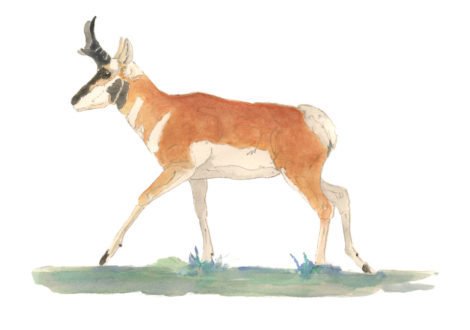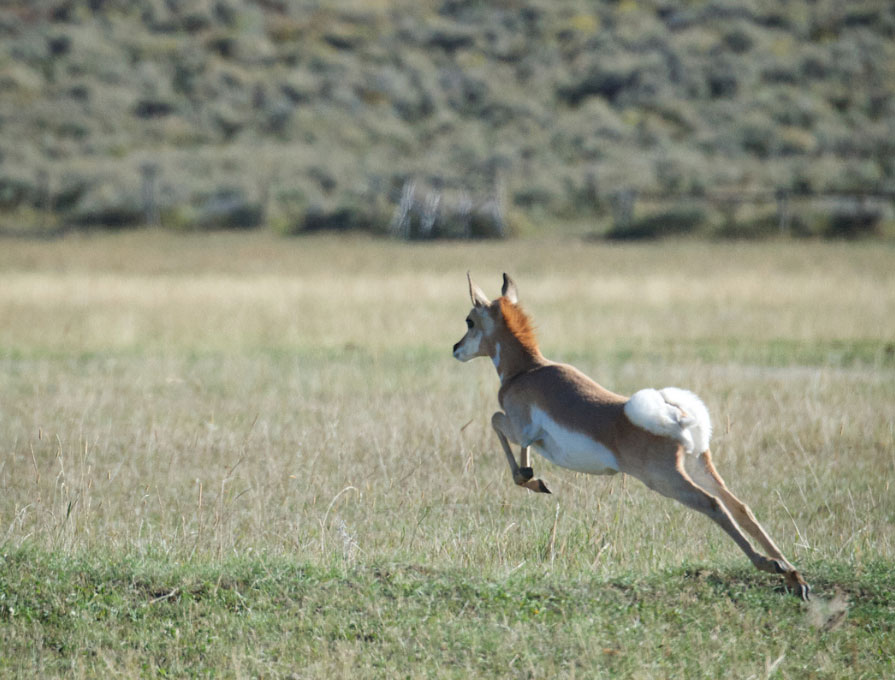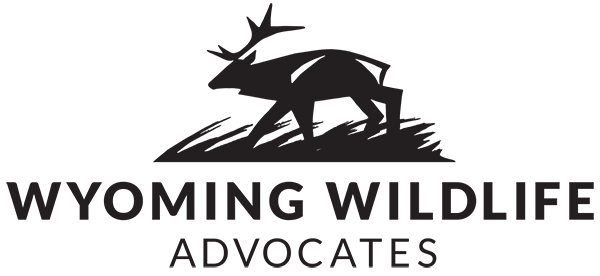
Animal Facts
Capable of sprinting up to 60 miles per hour, pronghorn are the fastest land animal in North America. Globally, they’re only second to the cheetah! Their horns are exceptional as well; like the bison, pronghorn have true horns (not antlers). But unlike other horned animals, pronghorns shed and re-grow the horn sheath every year. While both males and females have horns (female horns are significantly smaller), only males can be identified by a black patch on their cheeks.
Pronghorn weigh approximately 100 pounds and live seven to 10 years. They mate in fall, with males rounding up groups of eight to 10 females to mate with over several weeks. Males will spar with each other in competition for females.
Most pronghorns in Jackson Hole reside in Grand Teton National Park, where that population fluctuates between 300 to 400. A population of similar size inhabits Yellowstone.
Pronghorn prefer open grasslands for their habitat. Their speed and exceptional eyesight provide safety from predators.
Pronghorn migrate as far as 100 miles out of Jackson Hole to more hospitable winter range to the south. It is not uncommon for some to miscalculate the time to migrate, and become stranded in the valley. Their survival in a Jackson Hole winter is difficult.
Conservation Challenges
While deer can gracefully leap obstacles with ease, antelope will not jump over a fence. Instead, they prefer to duck underneath. This means that it’s important for ranchers and other landowners to consider whether they might be interrupting important migratory routes. Additionally, pronghorn need to cross roads when migrating or moving from one area to another. While some crossing structures have addressed this, more are needed.
Pronghorn are designated a sensitive species in Yellowstone. Between 1991 and 1995, the population dropped by 50 percent. Possible causes could have been predation and loss of winter range.

